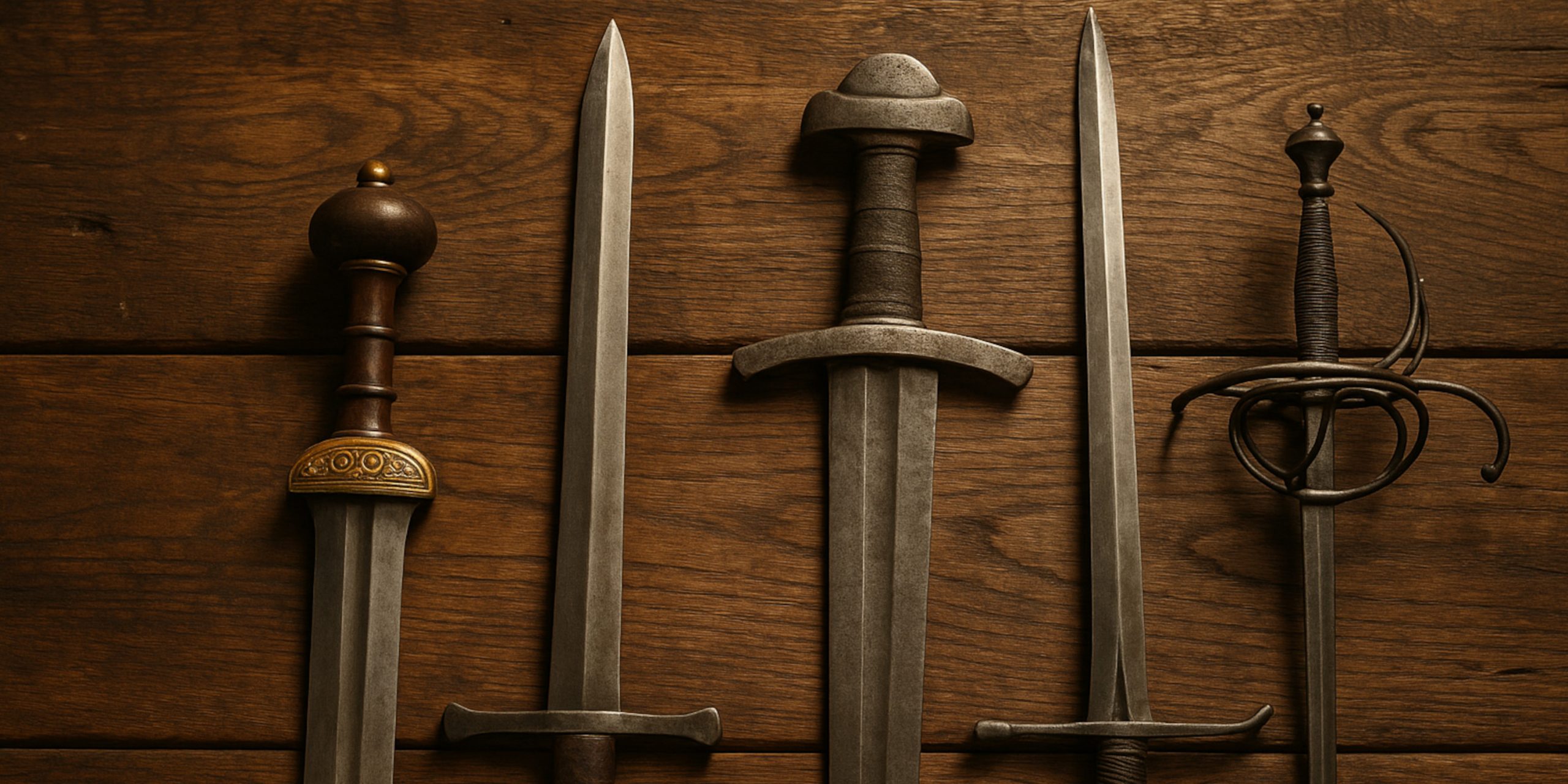From the leaf-shaped bronze weapons of Mycenaean warriors to the finely balanced rapiers of Renaissance duelists, European swords reflect both practical function and cultural significance. These weapons capture the technological innovation, combat principles, and societal values of their time. This analysis considers Europe’s bladed weapons as dynamic products of shifting warfare, metallurgical advancements, and social transformations over three thousand years.
Chronological Development of European Swords Antiquity (1000 BCE – 500 CE) Type Civilization Blade Characteristics Combat Role Bronze Age Swords Mycenaean, Celtic Leaf-shaped, cast bronze (50–60 cm) Stabbing/slashing Greek Xiphos Classical Greece Straight, double-edged (50–60 cm) Hoplite secondary weapon Roman Gladius Roman Empire Short, tapered (60 cm, Pompeii type) Legionary close-quarters Roman Spatha Late Roman Longer (75–100 cm), straight Cavalry, later infantry
Early to High Medieval (500–1300 CE) Migration Period to Viking Age Late Medieval (1300–1500 CE) Knightly and Infantry Swords Type Length Hilt Design Primary Use Arming Sword 70–90 cm Cruciform, one-handed Shield/sword combat Longsword 90–120 cm Extended grip Two-handed cuts/thrusts Falchion 60–80 cm Single-edged, curved Peasant levies, cleaving
Renaissance to Early Modern (1500–1700 CE) Military and Dueling Swords Type Era Blade Profile Notable Traits Zweihänder 1500s 150–180 cm Pike formation breaker Estoc 1400–1600 Stiff, edgeless Plate armor penetration Rapier 1550–1700 Slim, complex hilts Civilian dueling
Metallurgical Evolution Period Technique Example Swords Impact Bronze Age Casting Mycenaean Type B Limited edge retention Migration Era Pattern-welding Sutton Hoo sword Decorative, functional High Medieval Water-powered forges Oakeshott Type XII Mass production Renaissance Crucible steel Toledo rapiers Superior flexibility
Regional Variations Region Signature Types Distinctive Features Germany Messer , Katzbalger Single-edged, knuckle guards Scotland Claymore , baskethilt Two-handed or protective hilts Spain Espada ropera Cup-hilt rapier design Poland Karabela Eagle-head pommel
Functional Classification Battlefield Swords Type Optimal Range Against Armor? Historical Users Spatha Medium No (mail) Roman cavalry Longsword Variable Yes (thrusts) Medieval knights Zweihänder Long Yes (polearms) Landsknechts
Civilian Swords Type Social Context Training System Rapier Urban dueling culture Italian fencing schools Smallsword Enlightenment nobility French classical fencing
Cultural and Ceremonial Roles Function Example Swords Symbolism Coronation Sword of Mercy (UK) Divine right of kings Execution German Richtschwert Judicial authority Guild Status Meisterbrief swords Master craftsman recognition
Modern Study and Preservation Institution Key Collections Research Focus Wallace Collection (London) Renaissance rapiers, medieval swords Hilt typologies Kunsthistorisches Museum (Vienna) Imperial armories Metallurgical analysis Musée de l’Armée (Paris) Napoleonic sabres Cavalry tactics
Martial Arts Revival Weapon Historical Manual Modern Practice Longsword Fiore dei Liberi (1409)HEMA tournamentsRapier Capo Ferro (1610) Classical fencing Sabre Hutton (1798) Olympic fencing
This structured taxonomy organizes European swords by era, region, and function, enabling direct comparison of technological and cultural developments. The tables highlight evolutionary patterns in blade geometry, metallurgy, and combat applications while maintaining historical context. Each category demonstrates how swords reflected the military needs, social hierarchies, and artistic values of their respective periods.
Related: Discover the full list of European Sword types by era
Post navigation








